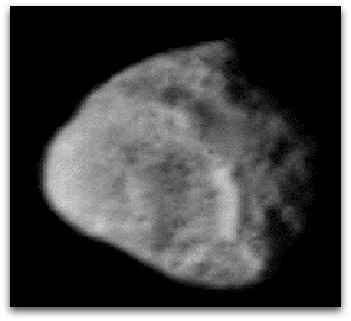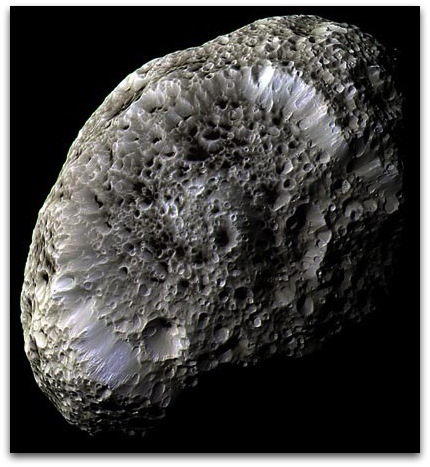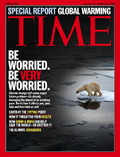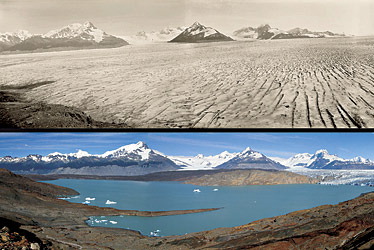Evangelical, Scientific Leaders Launch Effort to Protect Creation
FOR IMMEDIATE RELEASE
January 17, 2007
CONTACTS: Heather Gonzales
202-789-1011
Evangelical, Scientific Leaders Launch Effort to Protect Creation
WASHINGTON, DC - In a first-of-its-kind collaboration, evangelical and scientific leaders announced today a joint effort to protect the environment. Speaking at a news conference in Washington, DC, a dozen leaders of the coalition shared concerns about human-caused threats to Creation - including climate change, habitat destruction, pollution, species extinction, the spread of human infectious diseases, and other dangers to the well-being of societies.
The coalition released an “Urgent Call to Action” statement signed by 28 evangelical and scientific leaders. The statement - sent to President George W. Bush, House Speaker Nancy Pelosi, bipartisan congressional leaders, and national evangelical and scientific organizations - urges “fundamental change in values, lifestyles, and public policies required to address these worsening problems before it is too late. Business as usual cannot continue yet one more day.” The group pledged to “work together toward a responsible care for Creation and call with one voice” to the religious, scientific, business, political and educational arenas to join them in this historic initiative.
“There is no such thing as a Republican or Democrat, a liberal or conservative, a religious or secular environment. We all breathe the same air and drink the same water. Scientists and evangelicals share a deep moral commitment to preserve this precious gift we have all been given,” said Dr. Eric Chivian, Nobel laureate and Director of the Center for Health and the Global Environment at Harvard Medical School.
“Great scientists are people of imagination. So are people of great faith. We dare to imagine a world in which science and religion work together to reverse the degradation of Creation. We will not allow it to be progressively destroyed by human folly,” added Rev. Richard Cizik, Vice President for Governmental Affairs of the National Association of Evangelicals.
Stressing that their effort is just beginning, coalition members spoke about some of the immediate next steps they will be taking, including holding meetings with Congressional leaders from both parties to inform them of this unprecedented effort and encourage their attention to environmental issues. They also plan to hold a Summit on the Creation and will develop outreach tools, such as a Creation Care Bible study guide and environmental curricula.
“If current deterioration of the environment by human activity continues unabated, best estimates are that half of Earth's surviving species of plants and animals will be extinguished or critically endangered by the end of the century. The price for future generations will be paid in economic opportunity, environmental security, and spiritual fulfillment. The saving of the living environment is therefore an issue appropriately addressed jointly by science and religion,” said Pulitzer Prize-winning author Dr. Edward O. Wilson.
One of the imperatives of the group will be to advance the dialogue and influence policy in regards to global warming. “In order to avoid clear and substantial dangers...it will be necessary to substantially reduce CO2 emissions during the next few decades, and perhaps by 80 percent or more before the end of the century,” said Dr. James Hansen, the leading U.S. climate change scientist.
The coalition vowed to expand their collaboration and encourage action from all sectors of society. “We are glad to be partnering with our friends in the scientific community. They have the facts we need to present to our congregations; we have the numbers of activists that will work through churches, government, and the business community to make a significant impact,” said Dr. Joel Hunter, Senior Pastor of Northland Church in Orlando, Florida.
The unique collaboration, 28-members strong and growing, was spearheaded by leaders from the Center for Health and the Global Environment at Harvard Medical School and the National Association of Evangelicals. During a retreat held last November 30 to December 2nd in Thomasville, Georgia, the group agreed that science proves that the natural world is imperiled by human behaviors and policies, particularly by the unsustainable burning of fossil fuels and degradation of living systems. They decided to embark on a continuing collaboration and authored the “Urgent Call to Action” statement.
*Institutional affiliation is given for identification purposes only. All signatories do so as individuals expressing their personal opinions and not as representatives of their organizations.*
I've contacted the NAE in an attempt to get a copy of the actual an "Urgent Call to Action" document as well as a list of the signatories. When I get these, I will post them here on the blog.
Environment Watch: Ancient Ice Shelf Breaks Off in Arctic
Be sure to view the ABC News Video for ramifications. The Reuters article is reproduced below:
Huge ice shelf breaks free in Canada's far north
By Jeffrey Jones
Reuters
CALGARY, Alberta - A chunk of ice bigger than the area of Manhattan broke from an ice shelf in Canada's far north and could wreak havoc if it starts to float westward toward oil-drilling regions and shipping lanes next summer, a researcher said on Friday.
Global warming could be one cause of the break of the Ayles Ice Shelf at Ellesmere Island, which occurred in the summer of 2005 but was only detected recently by satellite photos, said Luke Copland, assistant professor at the University of Ottawa's geography department.
It was the largest such break in nearly three decades, casting an ice floe with an area of 66 square km (25 square miles) adrift in the Arctic Ocean, said Copland, who specializes in the study of glaciers and ice masses. Manhattan has an area of 61 square km (24 square miles).
The mass is now 50 square km (19 square miles) in size.
"The Arctic is all frozen up for the winter and it's stuck in the sea ice about 50 km (30 miles) off the coast," he said.
"The risk is that next summer, as that sea ice melts, this large ice island can then move itself around off the coast and one potential path for it is to make its way westward toward the Beaufort Sea, and the Beaufort Sea is where there is lots of oil and gas exploration, oil rigs and shipping."
The break went undetected when it happened due primarily to the remoteness of the northern coast of Ellesmere island, which is only about 800 km (500 miles) from the North Pole.
The speed of the crack and drift-off shocked scientists.
Satellite images showed the 15-km long (9-mile long) crack, then the ice floating about 1 km (0.6 miles) from the coast within about an hour, Copland said.
"You could stand at one edge and not see the other side, and for something that large to move that quickly is quite amazing," he said.
Copland said the break was likely due to a combination of low accumulations of sea ice around the mass's edges as high winds blew it away, as well as one of the Arctic's warmest temperatures on record. The region was 3 degrees Celsius (5.4 degrees F) above average in the summer of 2005, he said.
Ice shelves in Canada's far north have decreased in size by as much as 90 percent since 1906, and global warming likely played a role in the Ayles break, Copland said.
"It's hard to tie one event to climate change, but when you look at the longer-term trend, the bigger picture, we've lost a lot of ice shelves on northern Ellesmere in the past century and this is that continuing," he said. "And this is the biggest one in the last 25 years."
Copyright 2007 Reuters News Service. All rights reserved. This material may not be published, broadcast, rewritten, or redistributed.
Tick & Train
I received a "Christianitytoday.com Connection" email this morning that highlighted two new commercials which they described as "designed to encourage people to protect the world God has given us." I am going to post the two videos here, but don't just view them (or ignore them) and move on. I'm also providing a link that gives the science behind these commercials.
Until recently, I ignored or even scoffed at this issue. However, like a lot of other evangelicals, I'm waking up to the facts. Care of creation is OUR responsibility, given to us in Genesis 1:27 ff. To neglect our responsibility in this matter is to be in rebellion against God and his good creation.
TICK:
TRAIN:
Find out more--Science Behind the Ads.
Hyperion
When I had a few moments to sit on my back patio yesterday, I finally got around to perusing the April issue of National Geographic that had come in the mail a few weeks ago. On p. 26 or thereabouts (it's not actually marked), there is a stunning picture of Hyperion, the absolute oddest of Saturn's 47 or so moons.
[Side note: Hyperion was the name of an unremarkable Titan in Greek mythology. His name is included in the lists of the Titans, but nothing else is known of him.]
Now before you see the clarity of the image, consider that before 2005, most of the images we had of Hyperion looked like something like this:

But last Fall, Nasa's Cassini's spacecraft was able to capture this incredible image:

From the April 2006 National Geographic:
Saturn's Strangest Moon. The Cassini spacecraft swooped in just 310 miles above the surface to get this closest ever view of Saturn's moon Hyperion. About 178 miles in diameter, the irregularly shaped satellite circles Saturn in a tumbling rotation. It's been theorized that Hyperion's odd shape was caused long ago by collisions with other objects in space. Hyperion's cratered surface, however, is a revelation; none of Saturn's other 46 moons look similar. Scientists are now studying the new images to help clear up questions about Hyperion's origins.--Margaret G. Zackowitz
Incredible. Simply Incredible.
“When I consider your heavens,
the work of your fingers,
the moon and the stars,
which you have set in place,
what are mere mortals that you are mindful of them,
human beings that you care for them?
You have made them a little lower than the heavenly beings
and crowned them with glory and honor.”
(Psalm 8:3-5, TNIV)
A Very Important Message from President George Bush on Global Warming
Global Warming--It's Time to Start Paying Attention
he created them godlike,
Reflecting God’s nature.
He created them male and female.
God blessed them:
“Prosper! Reproduce! Fill Earth! Take charge!
Be responsible for fish in the sea and birds in the air,
for every living thing that moves on the face of Earth.”
Then God said, “I’ve given you
every sort of seed-bearing plant on Earth
And every kind of fruit-bearing tree,
given them to you for food.
To all animals and all birds,
everything that moves and breathes,
I give whatever grows out of the ground for food.”
And there it was.
God looked over everything he had made;
it was so good, so very good!
It was evening, it was morning—
Day Six.”
(Gen 1:27-31, The Message, emphasis added)
“The Lord God took the man and placed him in the garden of Eden to work it and watch over it.”
(Gen 2:15, HCSB)

If you haven't read the newest issue of Time Magazine yet, I encourage you to go pick up a copy or read it at the library. Although, I can provide you with a link to the main article here, you really need to review the photographs and charts yourself that are only found in the print version.
I confess to you that I've always been a bit skeptical about global warming concerns. How do we know that warming trends are not just part of normal earth cycles? How do we know for certain that humans are the cause? Is there anything we could really do about such things anyway? And I admit that in my skepticism I've used these kinds of questions as an excuse to ignore the problem. But the problem is upon us. The problem is real and its here.

"So what?" you ask. Well, this isn't just confined to one glacier. It's happening all over the world. Not only are glaciers melting, but so are polar caps and permafrost. This huge amount of ice is part of God's system for maintaining life on this planet. The ice does two things. Not only does it help keep ocean temperatures at an optimal level, but it also reflects unneeded sunlight back into space. Take away the ice, and not only do you start to lose many of your coastlines, but things start to warm up all over the planet. The latter is more significant than just causing you to run your air conditioner a little harder. The warmer oceans spawn tsunamis and hurricanes with a much greater intensity than what we've been used to over the last few thousand years.
What causes glaciers and ice caps to melt? Well, there are lots of factors, but undeniably, carbon dioxide (CO2)plays a real part in this. We need CO2 to maintain the temperature levels we are used to, but too much of it has dangerous side effects. CO2 in our atmosphere allows sunlight to come in while preventing the heat from going back out. But you could see why too much would be a bad thing. What causes too much CO2 in our atmosphere? Well, lots of things. Some causes are natural such as volcanic eruptions (above and below the sea), forrest fires, and natural biological decay of plant and animal matter. But burning fossil fuels (the stuff that makes your car move) also releases CO2 into the atmosphere. Not only gasoline, but also coal for electricity causes these emissions, called greenhouse gasses. And it's a cycle that feeds off itself exponentially. For instance, as the permafrost (ground frozen since the ice age) starts to melt in places like Alaska, Canada, and Siberia because of the factors described above, biological matter that has been frozen since before the ice age has begun to decay, adding even more CO2 to our atmosphere.
I firmly believe in the "anthropic principle, which states that from its very inception the universe was fine-tuned for the emergence of human life." Consider this explanation from Norman Geisler's Systematic Theology, vol. 1:
...oxygen comprises 21 percent of the atmosphere. If it were 25 percent, fires would erupt, and if only 15 percent, humans would suffocate. If the gravitational force were altered by merely one part in ten to the fortieth power (ten followed by 40 zeros), the sun would not exist and the moon would crash into the earth or veer off into space ... If the centrifugal force of planetary movement did not precisely balance the gravitational forces, nothing could be held in orbit around the sun. If the universe were expanding at a rate one-millionth more slowly than it is, the temperature of the earth would be 10,000 degrees celsius. If Jupiter were not in its current order, the earth would be bombarded with space material. If the earth's crust were thicker, too much oxygen would be transmitted to it to support life. If it were thinner, volcanic and tectonic activity would make life untenable. And if the rotation of the earth took longer than twenty-four hours, temperature differences between night and day would be too great... (33-34).
The anthropic principle extends to the very makeup of our atmosphere in relation to our ability to function and survive in the planetary home God has given us. Sadly, humankind has a poor track record of showing gratitude for God's provision. This goes all the way back to Genesis 3, does it not?
The article series in Time did not give definitive hope that global warming can be averted. It may in fact be too late. The ball may be rolling, and rolling exponentially. But that doesn't mean that we can't try--that we can't begin to change our ways now. If the Lord tarries, and we do nothing, this will not mean devastation in our generation, but life would certainly be of a different quality within three or four generations.
What can we do?
First, we have to stop sticking our heads in the sand over this issue. We can no longer dismiss it as the rantings of the political left or environmental extremists. A newly formed group, the Evangelical Climate Initiative, is looking for ways to address the problem. Their website is worth exploring. View their statement here. Also note the significant number of supporters from both academic and ecclesiastical circles of the Evangelical world, including men like David Dockery, Timothy George, David Gushee and Rick Warren.
Second, we have to start taking earth stewardship seriously. The Bible speaks quite a bit about these issues. In the long-run, it could even be the number-one pro-life concern.
Third, while we must take responsibility for the task God has given us to take care of his earth, we cannot forget that ultimately God is in control of our future. That's not an excuse to ignore global warming or any other issue, but it is a reminder that we have a hope and a future.
“The earth is the Lord’s, and all it contains,
The world, and those who dwell in it.”
(Psa 24:1 NASB)
Download-- Evangelical Climate Initiative booklet:
eci-booklet









